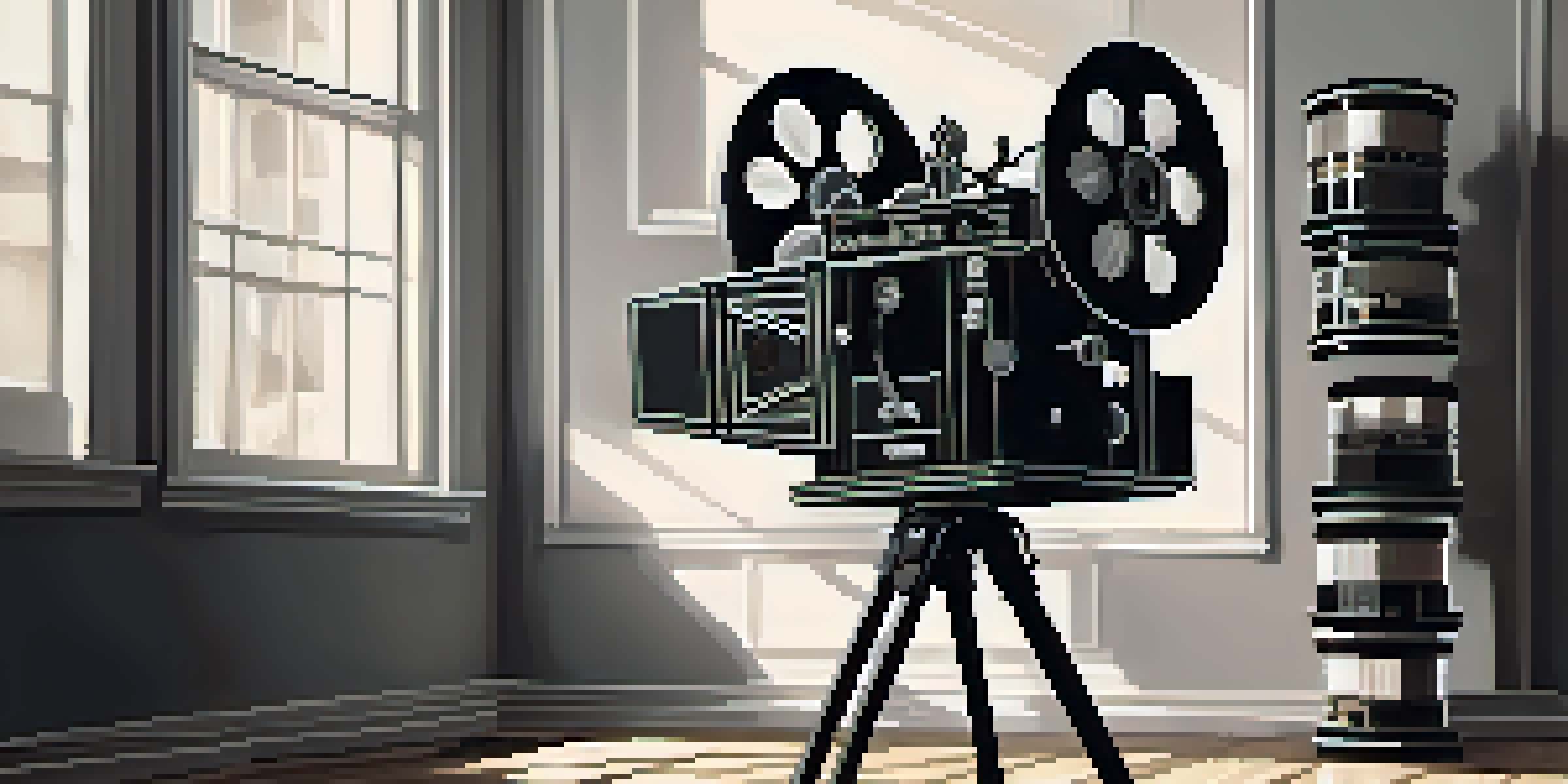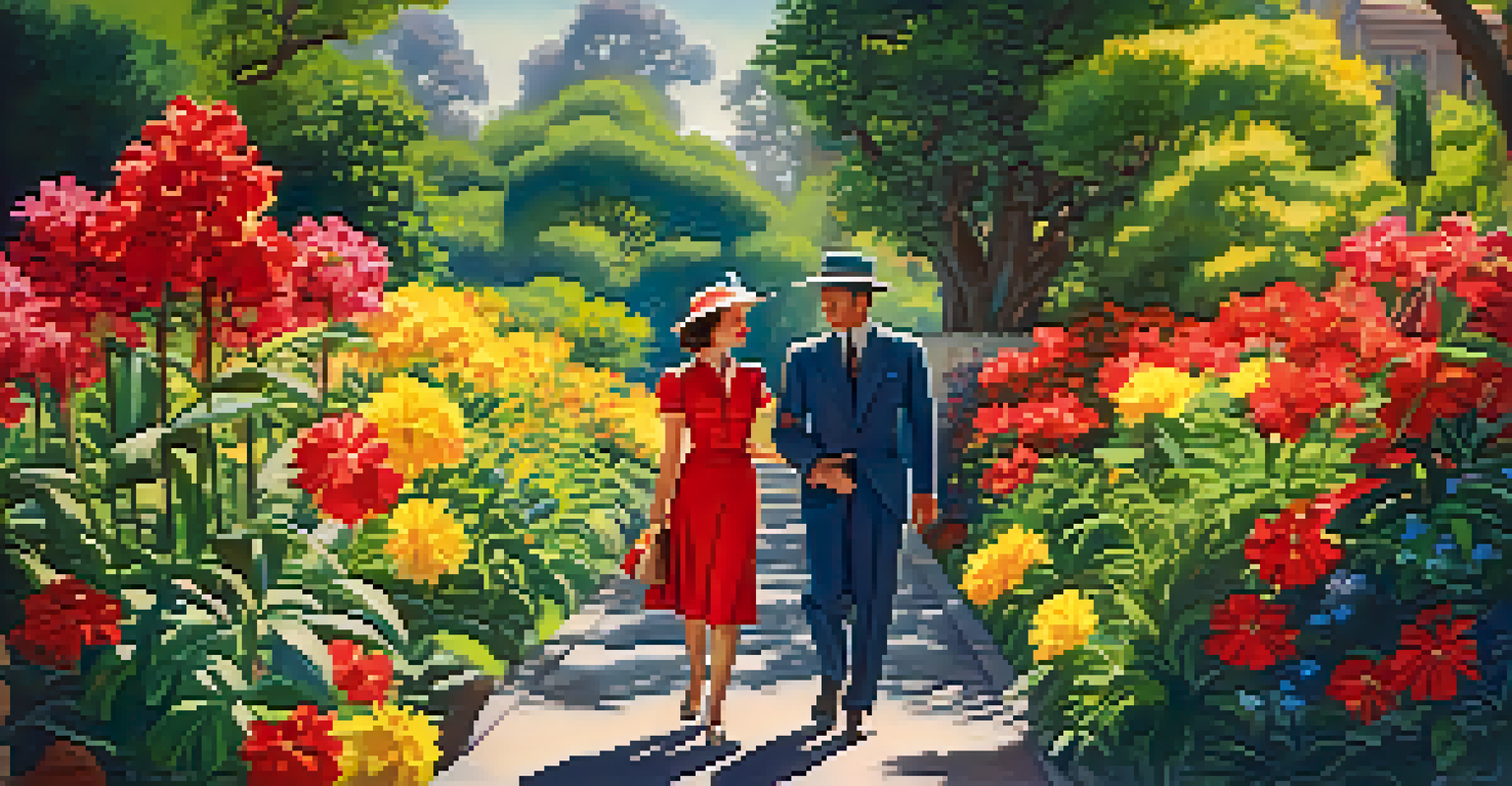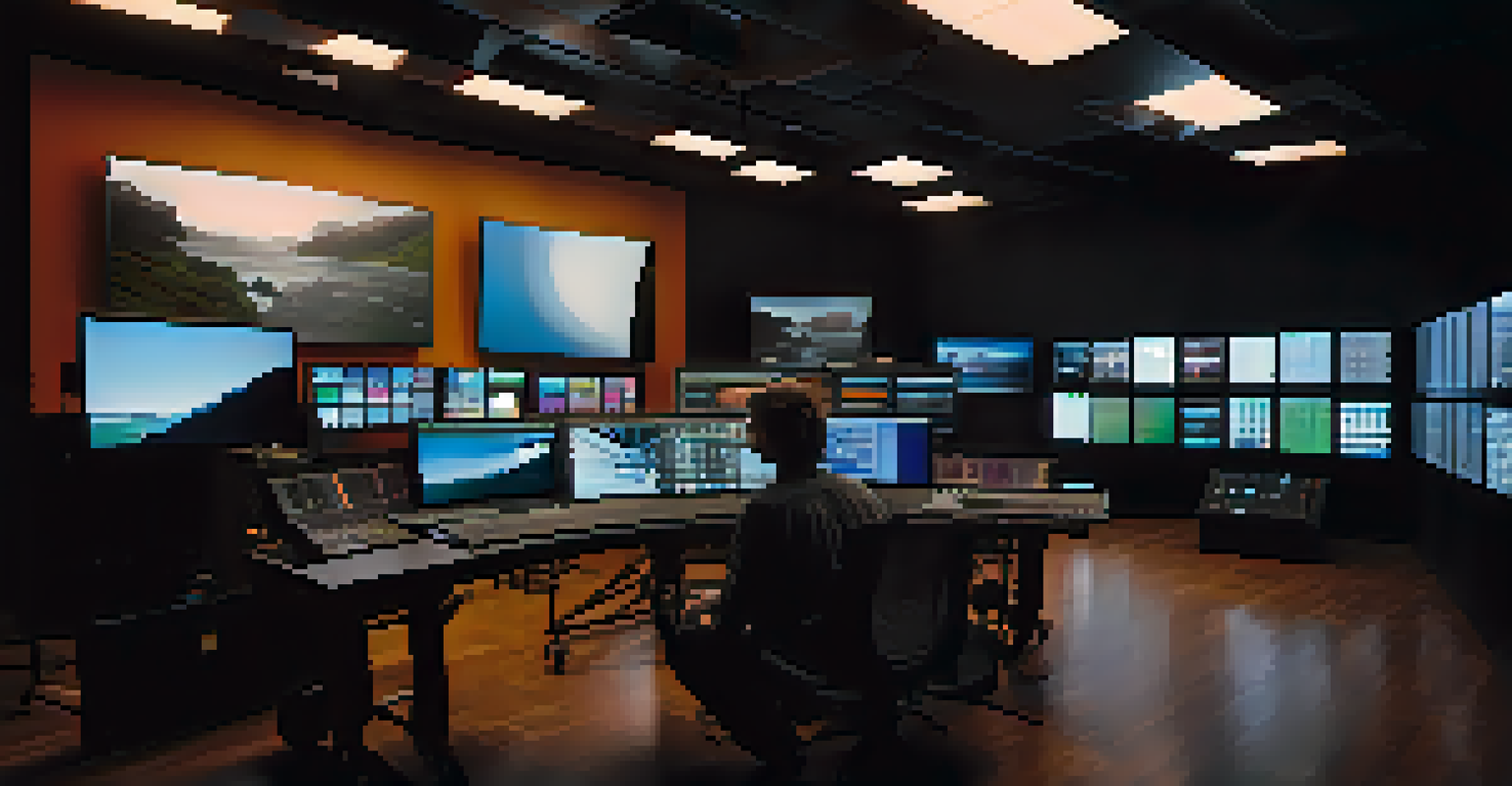Color in Cinema: The Evolution of Film Color Technology

The Beginnings: Black and White Era of Film
In the early days of cinema, films were predominantly shot in black and white. This limitation didn't hinder filmmakers; instead, it encouraged them to focus on storytelling and visual composition. Without color, elements like lighting, shadows, and contrasts became crucial tools in conveying emotions and themes.
Color is the keyboard, the eyes are the harmonies, the soul is the piano with many strings.
For instance, films like 'The Cabinet of Dr. Caligari' used stark contrasts to create a haunting atmosphere, which was essential for the expressionist movement. It was a time when the absence of color forced filmmakers to innovate with what they had, leading to striking visuals that remain iconic.
This black-and-white era laid the groundwork for future advancements in film technology, highlighting the importance of visual storytelling, a concept that would become even richer with the introduction of color.
The First Steps: Early Color Processes
The quest for color in film began in the late 19th century with experiments like Kinemacolor and the two-color process. These methods introduced color to films, albeit in limited forms. For example, Kinemacolor was the first successful color process that allowed filmmakers to produce films with a range of hues, albeit with a somewhat muted palette.

However, these early color films faced numerous challenges, including technical limitations and high production costs. Yet, they opened the door to a new world of possibilities, setting the stage for future innovations in color technology.
Black and White: Foundation of Film
The black-and-white era of cinema emphasized storytelling and visual composition, paving the way for future innovations in color technology.
Despite their shortcomings, these early color films sparked audiences' imaginations and demonstrated the potential of color in storytelling, paving the way for the advances that would follow.
The Technicolor Revolution: A Game Changer
The introduction of the three-color Technicolor process in the 1930s revolutionized the film industry. Unlike its predecessors, Technicolor offered vibrant and more accurate colors, capturing the audience's attention and transforming the cinematic experience. Films like 'The Wizard of Oz' and 'Gone with the Wind' showcased this technology, creating unforgettable visual spectacles.
The color of the film depends on the way we want to present the story. Color is a powerful visual tool.
This breakthrough not only enhanced the aesthetic appeal of movies but also changed how stories were told. The vivid colors allowed filmmakers to evoke emotions and set moods in ways that black and white could not, making the visual experience as crucial as the narrative.
As Technicolor became the standard, audiences began to associate color with quality in filmmaking, and it marked a shift towards a more colorful and dynamic era in cinema.
The Rise of Eastmancolor: Accessibility for All
In the late 1950s, Eastmancolor emerged, making color filmmaking more accessible to all filmmakers. This was a significant turning point, as it allowed independent filmmakers to create color films without the prohibitively high costs associated with Technicolor. This democratization of color technology led to a surge in creative storytelling.
Films like 'Psycho' and 'The Graduate' showcased the versatile use of color, enhancing their narratives and character development. The ability to shoot in color with greater ease encouraged experimentation, leading to innovative visual styles that defined the era.
Technicolor Transforms Cinema
The introduction of Technicolor revolutionized filmmaking by offering vibrant colors that enhanced emotional storytelling.
Eastmancolor's impact on the film industry was profound, as it not only broadened the palette available to filmmakers but also enriched the viewer's experience, allowing for a more immersive connection with the story.
Digital Revolution: Color in the Modern Era
The digital era has transformed color technology in cinema, offering filmmakers unprecedented control and precision. With advanced tools like color grading software, directors and cinematographers can manipulate color to achieve specific visual effects and moods. This level of customization allows for a tailored storytelling experience.
For example, films like 'Mad Max: Fury Road' utilized color grading to create a unique visual style that complemented its narrative. The vibrant colors helped convey the film's themes of chaos and survival in a post-apocalyptic world.
Digital technology has not only refined the process but has also expanded the ways in which color can be used artistically, leading to more visually stunning and emotionally resonant films.
The Psychology of Color in Film
Color is not just a visual element; it plays a crucial role in influencing audience emotions and perceptions. Filmmakers often use color to underscore themes, evoke feelings, and guide viewers' responses to characters and situations. For instance, the use of red can signify passion or danger, while blue may evoke calmness or sadness.
Consider how 'The Sixth Sense' employs color to reflect the protagonist's emotional journey. The careful selection of hues subtly reinforces the film's themes of isolation and fear, enhancing the overall experience for the audience.
Digital Era: Precision in Color
Digital technology has given filmmakers unprecedented control over color, allowing for tailored visual experiences that deepen audience engagement.
Understanding the psychology of color allows filmmakers to craft deeper narratives, creating a richer, more immersive viewing experience that resonates with audiences on a subconscious level.
Future Trends: The Next Frontier in Color Technology
As technology continues to evolve, the future of color in cinema looks promising. Innovations like virtual reality (VR) and augmented reality (AR) offer new dimensions for color application, allowing filmmakers to create immersive experiences that engage audiences like never before. Imagine walking through a film's world, experiencing color in a way that feels personal and interactive.
Additionally, advancements in artificial intelligence are beginning to influence color grading and correction, streamlining the process for filmmakers while enhancing creative possibilities. This could lead to even more unique visual styles and storytelling techniques.

The evolution of color technology in cinema is an ongoing journey. Each advancement brings with it new opportunities for creativity and expression, ensuring that the art of storytelling through color will continue to captivate audiences for generations to come.